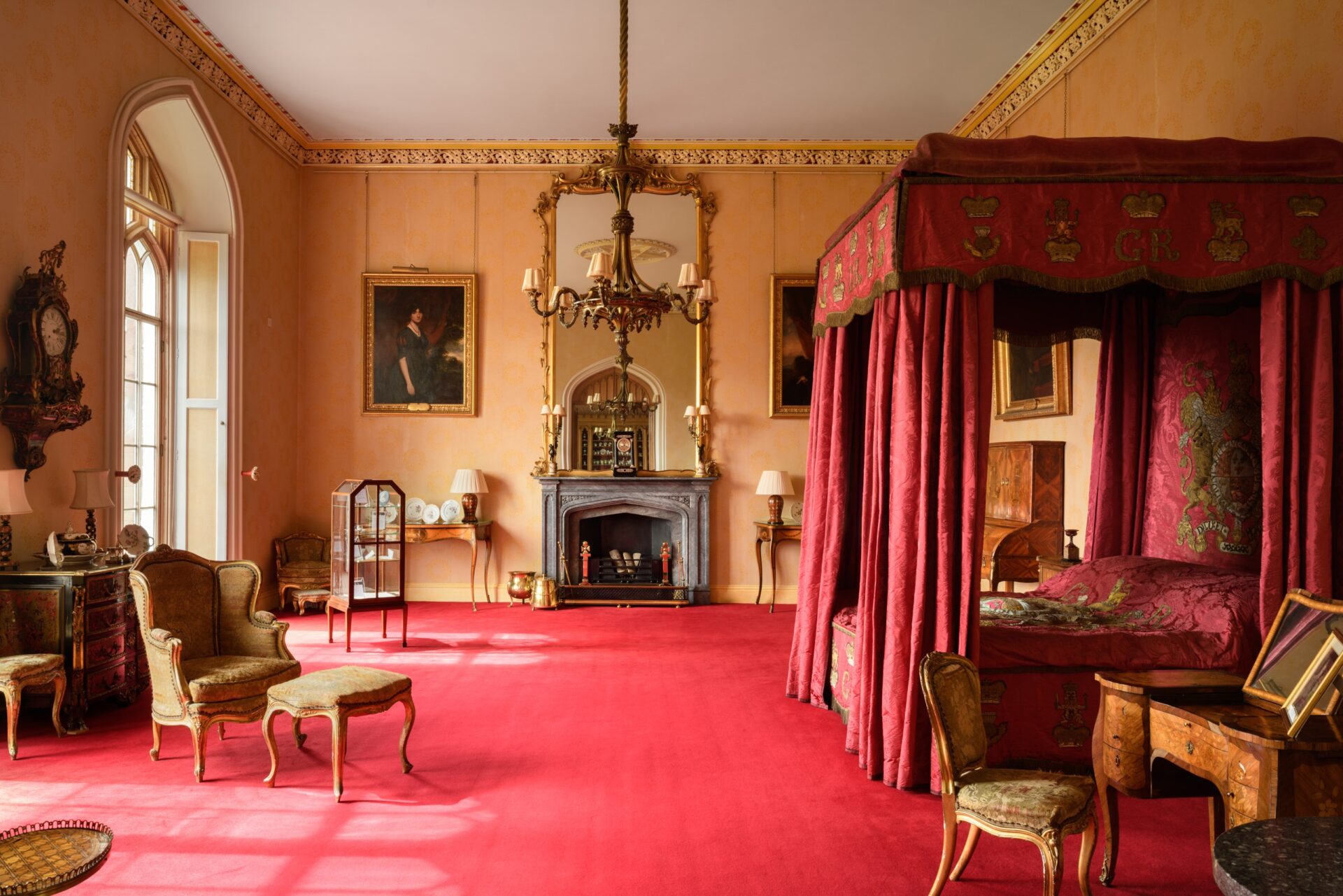Originally the Ambassador’s Room would have been designed and used as a music room. It was common in houses of this size to have the recreation rooms close together, with the music room leading off from the library. Today the room has been given a new identity, with the resplendent canopied bed commanding the room. This intricately embroidered bed, complete with the royal coat-of-arms embellishing the coverlet, belonged to the 2nd Earl of Mansfield and would have been used by him during his ambassadorships in Vienna and Paris.
To the right of the doorway hangs a portrait of the 2nd Earl which was painted by Batoni (1708-1787) when he was still Viscount Stormont. His expression emanates candour and charm, qualities befitting a distinguished diplomat. He was known to be an intelligent man who was much admired for his sharp wit and refined taste.
There are a number of interesting portraits in this room. Either side of the fireplace are two portraits, one of the 3rd Earl, who modernised Scone, and the other of his wife Frederica, both painted by Hoppner (1758-1810). If you would like to know more about any of the other portraits on display in this room, please ask your nearest guide.
However, the most significant portrait in this room is the enchanting painting of Lady Elizabeth Murray and Dido Belle, captured in the grounds of Kenwood House, by Scottish painter David Martin (1737-1797). Lady Elizabeth Murray, who is seated with a book, was the daughter of the 2nd Earl of Mansfield. Tragically, her mother died giving birth to her, and her father, who was in the throes of his political career in Europe, was unable to raise her by himself, and so Lady Elizabeth Murray was raised by her great-uncle, the 1st Earl of Mansfield at Kenwood House in London. The girl of colour in the portrait is Dido Belle. She was the daughter of Sir John Lindsay, the 1st Earl’s nephew. He was a highly decorated captain in the Royal Navy and eventually rose to the rank of Admiral. A portrait of Captain Lindsay can be seen on the wall to the left of the door. Her mother, whom Lindsay had rescued from a Spanish slaver during the battle for Havana, died when she was young. So, like his cousin, unable to raise his little girl at sea, he also entrusted her care to Lord and Lady Mansfield. The two girls were treated as sisters, both enjoying the security and comfort of society life. If you would like to know more about Dido’s story, please ask your nearest guide.
Taking centre stage in the room is an exquisite Louis XV Marquetry Table Glissante by Nicholas Grevenich. The serpentine top, which is inlaid with an elaborate street scene, slides in conjunction with the frieze drawer to reveal a rising reading support. The central panel is inlaid with a portrait of François Premier, and swivels to reveal a mirror. Also of note in this room is a Louis XV Marquetry Bureau-Cabinet. The upper parts of the doors is inlaid with oval panels of urns and flowers which enclose a fitted interior with three drawers. The piece stands on cabriole legs and is stamped F. Bayer. It is branded in three places with the Murray stars from the family coat-of-arms.
Either side of the fireplace are a pair of George III Satinwood and Marquetry Serpentine tables, possibly by Mayhew and Ince. Designed in the French taste, they are beautifully shaped with a satinwood, tulipwood and purpleheart veneer.
On one of the tables is a Louis XVI Ormolu Mantel Clock. The 3.5 inch white enamel dial is signed Mabille à Paris. The drum-shaped case is surmounted by an urn and supported by a lion. The rectangular base, hung with laurel swags sits on an ebony plinth, mounted with rosettes and foliage.
On the mantlepiece, either side of the mirror, is a pair of Louis XVI candle-stands. The three-branch stands sit upon white marble bases and are decorated with patinated infant putti.
But perhaps the most endearing piece of furniture in the room is the child’s mid-18th century Sedan Chair, made from papier-mâché in a Louis XV design.
